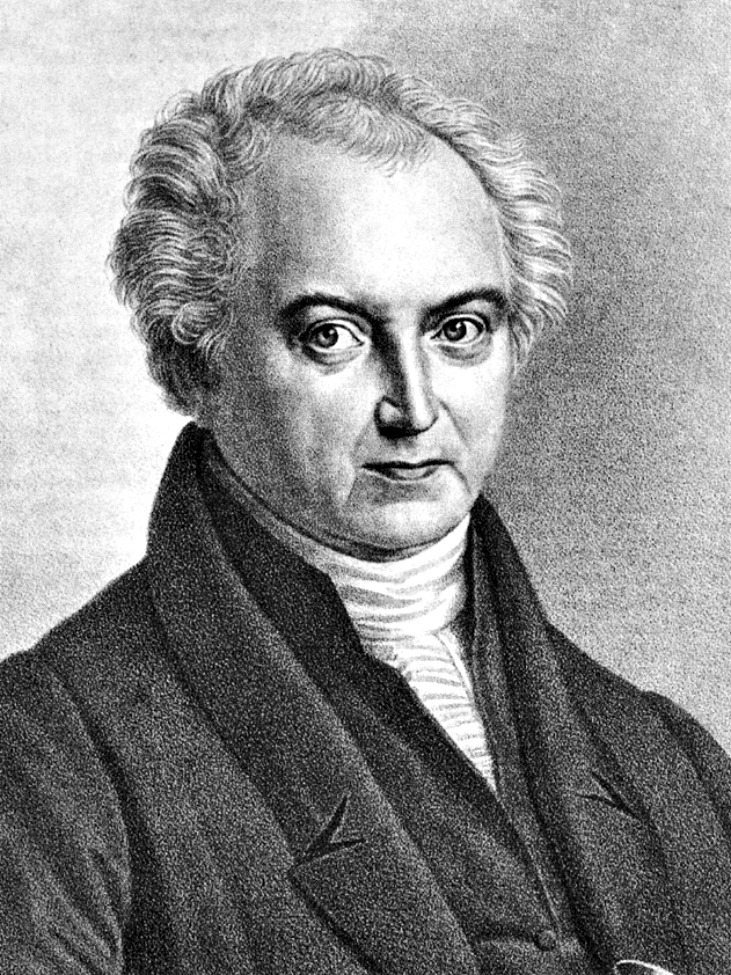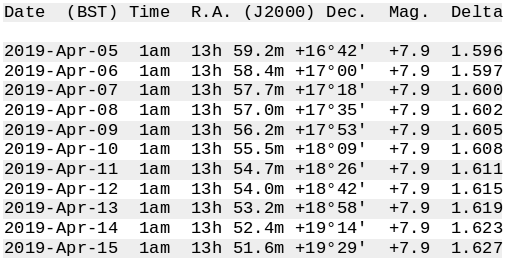

That Pallas should currently be found some 28 degrees north of the ecliptic immediately reveals an important fact about this asteroid: a high orbital inclination. So much so that the orbit of Pallas is tilted by almost 35 degrees to that of Earth.
Unlike 1 Ceres and 4 Vesta that have been photographed in great detail from close orbit by NASA’s Dawn spacecraft, Pallas has not been studied by a spacecraft thus far. Pallas has, however, passed in front of stars on a number of occasions and these occultation events have established its dimensions to be 550 x 516 x 476 kilometres (342 x 321 x 296 miles). With a mean diameter of 512 kilometres, Pallas is therefore about one-sixth the size of our Moon.
Pallas also has a very high axial tilt of 84 degrees, meaning that areas near the asteroid’s poles experience continuous sunlight for up to two years, while other parts of its surface can remain in constant darkness or constant sunlight for about an Earth year. Pallas rotates on its axis in a period of 7 hours 48.8 minutes with an orbital period of 4 years 224 days at a mean distance of 2.77 astronomical units from the Sun.

Dwarf planet Ceres, the largest object in the asteroid belt, was discovered by Italian Catholic priest and astronomer Giuseppe Piazzi on the first day of the 19th century. However, owing to a poorly determined orbit before it slipped into conjunction behind the Sun, Ceres was lost for a time.
German physician and astronomer Heinrich Wilhelm Matthäus Olbers (1758-1840) was observing Ceres three months after he helped recover it based on a refined orbital calculation by the young Carl Friedrich Gauss when, on 28 March 1802, Olbers found another seventh-magnitude moving object just 7½ degrees away; he had found asteroid number two, which he called Pallas.
Heinrich W. M. Olbers was evidently a fascinating character. He was a medical practitioner in Bremen by day, but by night studied the sky from an observatory in the upper storey of his home — apparently, he never slept more than four hours. His diligence paid off with the discovery of periodic comet 13P/Olbers on 6 March 1815. He also dabbled in cosmology, as anyone who has encountered Olbers’ paradox will know.
Observing Pallas with binoculars or a small telescope
Owing to its rather eccentric orbit, the opposition distance of Pallas varies considerably. At rare perihelic oppositions, Pallas can attain magnitude +6.5 making it an easy binocular object and a potential naked-eye target for particularly keen-sighted individuals. At its faintest, Pallas can sink to almost magnitude +10.7. For its 2019 opposition on 10 April, Pallas is a comfortable binocular target at magnitude +7.9.
For ten nights starting 5 April 2019, Pallas and unmistakable magnitude -0.05 Arcturus – the northern celestial hemisphere’s brightest star – lie within the same field of view of typical 8× binoculars (see the star chart at the top of the page). Don’t miss Pallas’s close conjunction with magnitude +2.7 star eta (η) Boötis (otherwise known as Murphid) at 22h UT (11pm BST) on the night of 10 April when the star and asteroid are just 1.7 arcminutes apart.
Note on Pallas’s opposition date
Depending on the source that you use, the official 2019 opposition date of 2 Pallas is given as 6, 10 or 19 April. I’m following the definition used by The Nautical Almanac Office (USNO) and Her Majesty’s Nautical Almanac Office, where the ecliptic longitudes of Pallas and the Sun differ by 180 degrees, which occurs on 10 April 2019 close to 01h UT.



